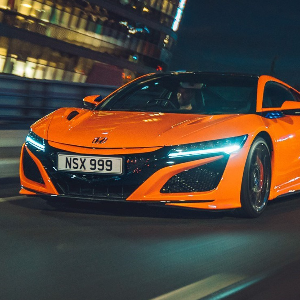
This is the all-new fourth-generation Honda Jazz. Can its hybrid drivetrain and impressive practicality attract new buyers?
Honda is one of the most diverse companies in the world, making much more than your humble hatchback. It makes speedboat engines, lawnmowers, generators, quad bikes, ATVs, snow throwers, motorbikes, AI-powered robots, and even a private jet! When you consider its broad range of engineering talent, it’s unsurprising that Honda’s array of cars is just as vast. While the NSX supercar serves as a halo model, the Jazz supermini is actually Honda’s real shining star.
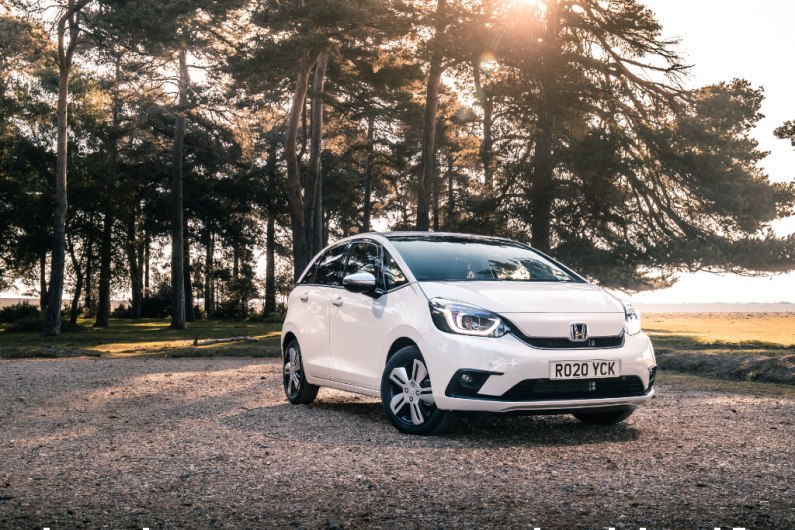
The little Jazz has been one of the Japanese marque’s biggest sellers over nearly two decades and three generations. However, the world we live in is a rapidly changing place, and so Honda’s supermini can’t afford to stand still. This all-new fourth-generation Jazz serves to spearhead an electrified revolution across the range, being offered solely as a hybrid model.
It certainly defines itself as a departure from its predecessor in the aesthetics department. Gone is the serious corporate face, and in its place a characterful personal with bulging headlights for eyes. Its looks won’t be for everyone, but this design makes it much less anonymous amongst competitors. It retains the same rounded silhouette as before, and that stubby Honda Super Cub motorbike-inspired nose makes it recognisable as a member of the Jazz family. However, a lack of sharp creases promotes a more elegant river pebble visage.
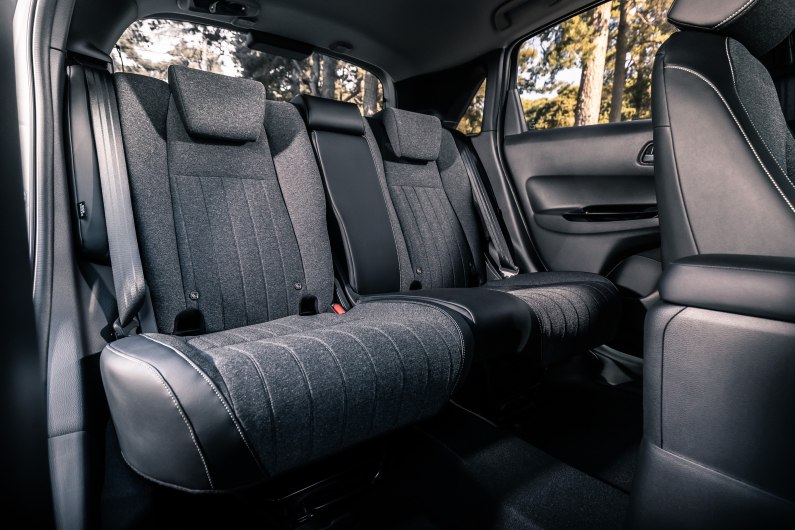
The new Jazz might have changed its image, but its core strengths of practicality and versatility remain intact. Its boot is marginally smaller than before at 304-litres, but the aperture is wide and a low load lip makes stowing heavy items easier. Fold the rear seat flat and an impressive 1,205-litres of capacity is yours – a space that will happily accommodate things such as a mountain bike. Then there’s the handy rear doors that open to a wide 90 degrees, something that makes filling the car with people or other miscellanea a breeze. Honda’s ‘Magic Seats’ also make a welcome return, capable of folding their bases up like cinema seats when you need to load other oversized items. Just like its predecessor, the latest Honda Jazz is a bit of a TARDIS – ‘it’s bigger on the inside.’
The cabin itself has received a host of new soft-touch materials that serve to boost perceived quality. In addition to things being a little plusher, that typical durable feeling you get from Honda interiors is present and correct. A sense of spaciousness is accentuated by a new A-pillar design that primarily boosts forward visibility, but also lets more light into the cabin. There is the odd piece of scratchy plastic trim below knee hight, but overall the interior feels even more mature than before.
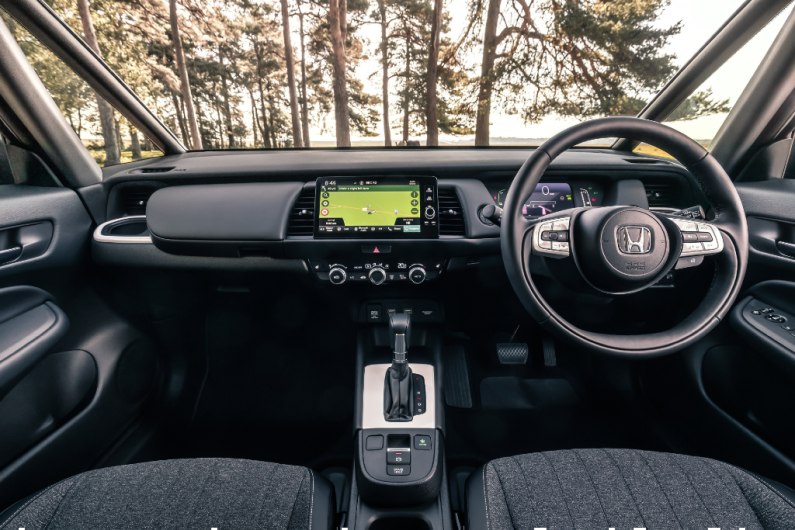
A new 9-inch touchscreen infotainment display is standard on SR specification cars and above, providing access to DAB radio, navigation, Apple CarPlay, Android Auto, and Honda’s new AI-powered voice assistant. This unit is a big improvement over its predecessor, and while not class leading, it is more responsive and easier to use than before.
Top specification EX cars like this one get heated seats and steering wheel for those cold winter mornings. Speaking of the seats, engineers worked hard to create a supportive post with more padding than before. They certainly prove to be a comfortable place to spend time, and their adjustment, along with the steering wheel, means that a positive seating position is never more than a few clicks away. Head room in the back is adequate for someone of average hight, but not exceptional thanks to the high seating potion. That said, legroom is arguably amongst the most generous in the class.
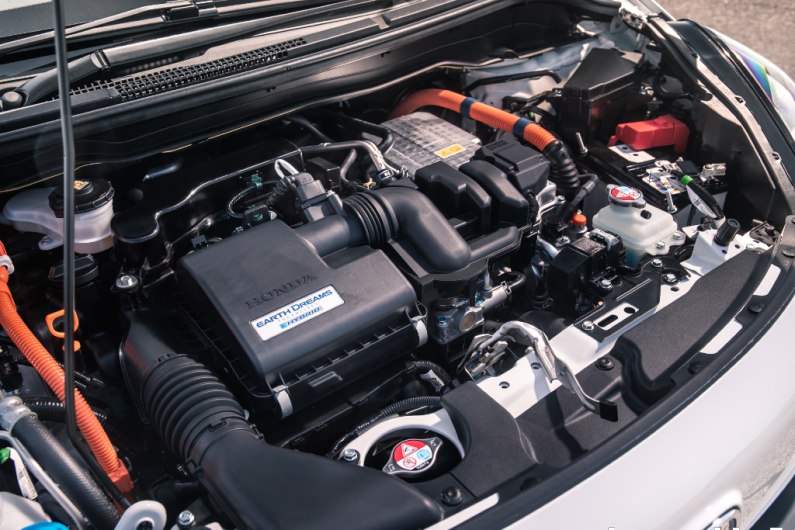
As mentioned, the Jazz can now only be had as a hybrid, meaning that it possesses a 1.5-litre turbocharged petrol engine and a pair of electric motors. All power the front wheels, but the way in which the Jazz goes about it is rather clever. There are in essence three drive modes, however, the flitting between them is done automatically with the car opting for the one that best suits the situation. EV Drive only uses the car’s electrical power, Hybrid Drive uses the engine to run a generator that charges a battery to power the wheels, and Engine Drive give life to the wheels directly. This setup means that the engine rarely powers the wheels, instead focusing on keeping the car’s battery topped up for the most efficient drive.
On the road the transition between drive modes is hardly noticeable. At low speed the use of electric power results in the same pleasantly sedate experience you find in pure EVs. The lack of noise makes for a refined environment, while the responsive torque on offer from the electric motors is perfect for taking advantage of a gap in the traffic. When switching into other modes, the Jazz does so without fuss and in a way that impressively blends the electric and combustion sources. The car’s eCVT transmission doesn’t technically have any gears, and so smooth continuous progress can be made. It even allows the engine to simulate the gradual increase of revs to make the drive much more harmonious than regular CVTs.
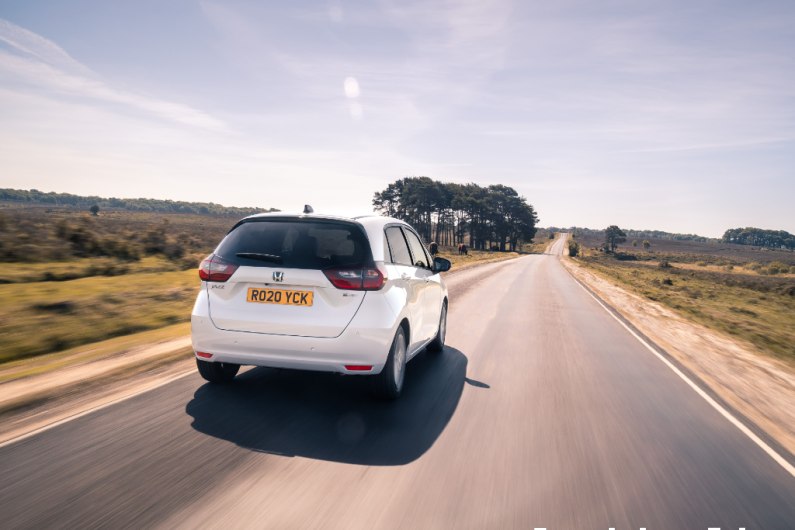
On smooth or fast flowing roads, refinement inside the Jazz is good with just a little wind noise around the mirrors building at motorway speeds. However, the low-speed ride in this EX car was more brittle than expected. The thudding of potholes and road imperfections primarily comes from this model’s 16-inch alloy wheels. While their windmill-like design is pleasing to the eyes, we suspect that the ride quality would improve with a smaller wheel. The higher-riding Crossstar EX model also sits on 16-inch wheels, but it has an additional 30mm of suspension to better soak up impacts. Ride aside, the suspension does a good job of fighting body roll – something it does better than the Crosstar.
Light steering and a tight turning circle makes it a great urban companion, but the little Jazz isn’t out of its depth on more challenging roads. It’s not the most fun to drive at a pace, that B-segment honour remains with the Ford Fiesta, but its aforementioned resistance to roll and surprising agility serves it well. There’s also a reasserting amount of grip helping you through a corner and 187lb ft of torque assisting you out of it. Sadly, the steering lacks any real communication or feel which robs the car of driving engagement.
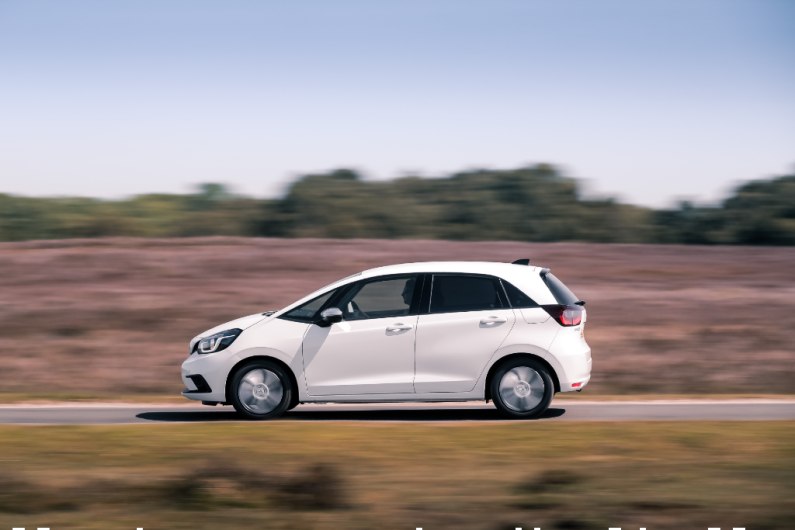
The all-new Honda Jazz excels at providing a highly versatile and impressively frugal package to those wanting a machine of function. If we’re totally honest, what it lacks in driving fun its traditional audience in the UK won’t miss. However, they will value Honda’s excellent build quality and how effortlessly the Jazz integrates with everyday life. If you fancy a Jazz with a bit more style, you can always check out the Crosstar EX.
Model tested: Honda Jazz EX
Price: £21,385
Engine: Turbocharged 1.5-litre petrol + two electric motors
Power: 108bhp
0-62mph: 9.5 seconds
Max speed: 108mph
MPG: 61.4mpg
